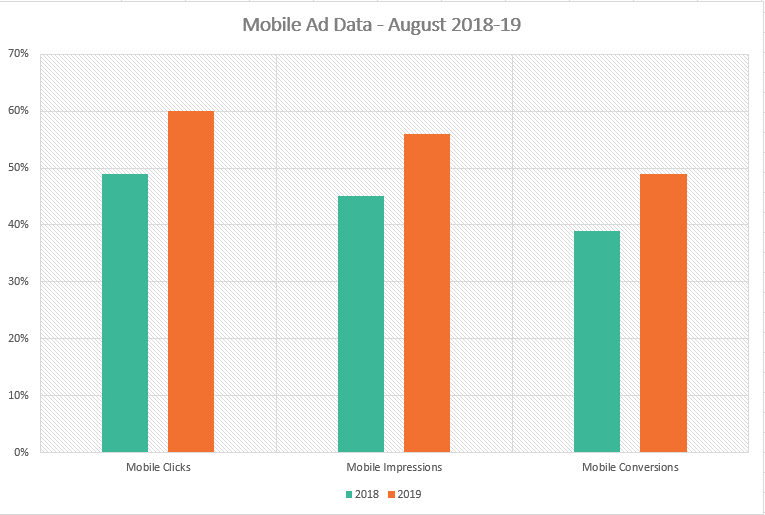Despite the fact mobile devices are now the dominant way that consumers browse and search the internet, mobile ad clicks and conversions are less valuable than those on the desktop. That’s according to an analysis of 10 million ad clicks across 100 accounts by digital marketing agency AccuraCast.
Mobile conversions growing but less valuable. But while mobile conversions grew a significant 10 points from 2018 to 2019 (39% to 49%), the majority of conversions still come from the desktop. AccuraCast said, “overall, desktop visitors convert 60% more than mobile visitors, and conversions from a desktop device are worth 93% more than mobile conversions, on average. (For B2C companies, conversion value was calculated as the average order value, and for B2B it was calculated as the lead value and propensity to buy.)”
Historically AOV for desktop transactions has been higher than on mobile devices. This is backed up by multiple other studies and reports. As a generalization, consumers browse on mobile devices and tend to buy on the desktop — although that is changing.
A year’s worth of data analyzed. The firm looked at mobile and desktop ad clicks between August 2018 and and August 2019. Mobile impressions, clicks and conversions (e-commerce or lead capture) grew during the 12-month period.

AccuraCast appears to not take into account mobile ad-influenced conversions that happen offline. If offline sales were factored in to the B2C data, that might change the calculation and conclusion somewhat. However, the agency is only looking at e-commerce.
Mobile UX problems. AccuraCast places the blame for higher mobile ad impressions but lower conversions on a range of potential problems with the mobile user experience. Among them:
Low quality apps/sites that drive traffic but not conversions.- Poor performing landing pages that aren’t transaction friendly.
- Ad formats that generate accidental clicks.
AccuraCast implies that latent conversions on different devices (mobile ad exposure with a later desktop conversion) may thwart tracking — and potentially distort the data to some degree. That issue isn’t really discussed in the report, except that AccuraCast recommends retargeting non-converting mobile users on the desktop, where they’re more likely to buy.
Why we should care. For years consultants and industry experts have advised retailers and others to speed up and simplify the mobile user experience. Heeding that advice has clearly borne fruit in the form of conversion and revenue growth on mobile devices.
What the AccuraCast report indicates is that there’s still some distance to go. However, retailers and other sellers should not see the desktop and mobile as mutually exclusive channels. Most shoppers are using multiple devices to make buying decisions, depending on the level of purchase consideration. One exception may be younger users who are less engaged with PCs and tend to favor mobile devices and physical stores over traditional e-commerce.

